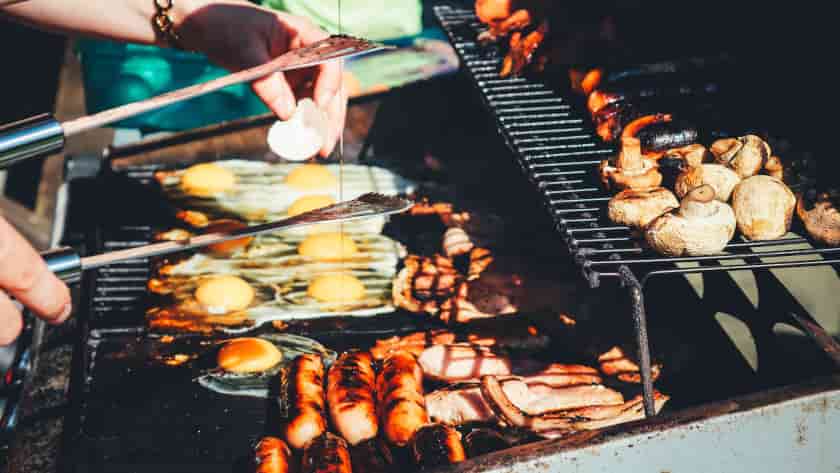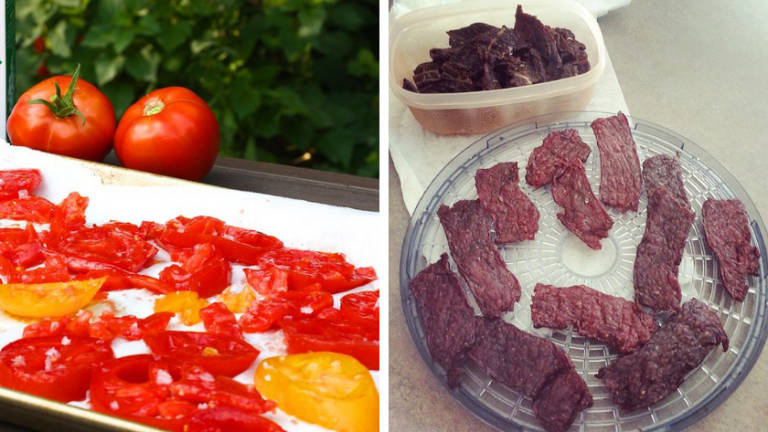Are Grill Mats Safe To Use? Grill Mat Health Risks
Grilling over a bed of coals is the world’s oldest cooking method. The ability to prepare food outdoors over a live fire is a primal passion for many and a daily method for others.
Grilling and cooking gadgets are released more and more frequently. One of which most used is grill mats with lot’s of benefits but are they really safe? Considering Teflon, PTFE and other substance used in their manufacturing.
Grilling forks have built-in thermometers, smokers can digitally monitor temperature and smoke output, and outdoor chefs can monitor the cooking process from apps.
Home and professional cooks become overburdened with these gadgets and it becomes difficult to know what is worthwhile and what is dubious in quality.
Some gadgets, however, can change the game. Sometimes a product comes along that is convenient, easy to clean, and even opens the door to previously impossible methods.
Grilling mats have made it possible to prepare food on grill tops that would normally be unheard of.
They drastically reduce the time spent cleaning grates. They are reusable and more environmentally friendly, unlike cooking foils. They should be considered a must-have for any kitchen.
What Are Grill Mats & Their Use
Grilling mats are fiberglass sheets that create a cooking surface that prevents foods from falling through spaces between bbq grates. These flexible mats, similar to non-stick pans, introduce food to live-fire cooking.
Unlike aluminum grill toppers, foil sheets, or pans, grill mats distribute heat more efficiently and are reusable creating less waste.
Grill mats create flat, non-porous, surfaces akin to griddles without the need for conditioning and upkeep. The griddle-like surface means that items such as pancakes and eggs can be prepared on grill grates.
The lightweight mats are easily stored taking up minimal space.
Some models may be cut and used to line stove eyes or oven bottoms. They make excellent liners for baking sheets to minimize clean-up. Circular models are even available for kettle grills.
Mats are extremely portable to be used while camping. For publically accessible grills like those found in parks, they make for a hygienic barrier for contaminated grates.
Since grill mats make an excellent platform for fish, allergens such as these can be isolated from other food.
Cooking mats can also ingeniously assist in indirect cooking. The mats create a barrier from direct heat altering convection currents to surround food. This effectively transforms conventional grills into roasting boxes or ovens.
Non-stick sheets are somewhat healthier than other options as oils and nonstick sprays are not required to prepare surfaces. Foods are therefore cooking with the liquids they have released resulting in better flavors.

Are Grill Mats Toxic?
Grilling mats are safe as long as properly used by the manufacturer’s instructions.
The chemical composition of grill mats has led to studies to determine potential toxicity and food contamination. The same concerns have been expressed over Teflon utensils.
Temperatures over 500F can produce fumes/vapors that could result in health risks. There has been no evidence of any chemicals or contaminants leaching into foods.
There is also no evidence of cancer or severe adverse side effects resulting directly from cooking on non-stick surfaces. The FDA has approved grilling mats and Teflon-coated pans to be safe.
While it is not recommended by the manufacturer to heat the mat beyond 500F the minute volume of fumes released would cause almost no adverse reaction within the body.
Some users reported flu-like symptoms following exposure but Perfluorooctanoic Acid (PFOA) attributed to the toxic flames has been phased out by manufacturers.
Consumer warning labels should still be followed as additional precautions. Teflon and other non-stick surface polymers are known for their stability in that they do not react with other chemicals.
Construction Material
Grill
mats are made from fiberglass cloth bonded to non-stick
Polytetrafluoroethylene, or PTFE, a fluoropolymer that is most notably
used to make Teflon.
These components have all been approved by the Food and Drug Administration. These components are also found in fabric protectors and wax.
Some alternative models rely on woven copper or even silicone instead of fiberglass. Each type has individual pros and cons that consumers should consider before purchase.
The Dupont company developed Teflon in 1938 and has been utilized in the manufacture of several products since.
PFOA ( Perfluorooctanoic Acid )
PFOA was used to manufacture PTFE and similar polymers by catalyzing the process but the Environmental Protection Agency determined PFOA was a harmful pollutant.
In 2003 manufacturers abandoned the use of PFOA for less toxic alternatives.
When PTFE with PFOA was heated, harmful fumes that were not burned away during manufacture could potentially be released. Many mats are available and listed as PFOA-free.
Health Risks of PFOA
Trace levels of PFOA can be found in the human body and drinking water. The health risks associated with exposure to PFOA are still not completely understood.
The most common complaint of those exposed to fumes was flu-like symptoms.
Initial concerns for harmful PFOA exposure were addressed to people living near manufacturing plants. These factories would have released potentially toxic fumes in large volumes for extended periods.
Over time air, soil, and water would have been saturated with PFOA particulate. Airborne and water pollution were theorized to cause ovarian and testicular cancer.
Preliminary studies believed that there was a link between the contaminants and an increase in cancer cells.
Though some studies have linked PFOA exposure to certain types of cancer according to the American Cancer Society states that not enough testing has been conducted to determine if PFOA is carcinogenic.
The International Agency for Research on Cancer did, however, deem that PFOA as a potential cancer risk for humans.
PFOA does tend to remain in the body and environment for extended lengths of time.
The EPA is currently considering actions to be taken to evaluate safe levels of PFOA found in drinking water especially near former manufacturers where concentrations are higher.
PFOA exposure is possible from contact with some ski waxes and fabric and carpeting infused with certain stain-repellent treatments.
There has been no definitive link between cooking on non-stick surfaces and cancer and no evidence has been found of toxic chemicals contamination.
Grill Mats: How To Ensure Safe Use
Do Not Overheat
Temperatures over 500F can produce fumes/vapors that could result in health risks.
Most grilling temperatures rarely reach over 400F. While the sheets are perfectly suitable to use over hot coals they should not be used over direct flame.
Mats should not be used directly on top of stove eyes or direct burners. Follow directions for building and distributing the coal beds before utilizing mats while grilling.
Fiberglass and silicone mats are often dishwasher safe but manufacturers warn against using the top racks. Instead, practice hand washes or use bottom racks when possible.
Minimize Friction
A major rule in cooking is using nonabrasive utensils like metal against non-stick surfaces. Scratches can be formed rendering the surface unsafe.
Wooden or silicone utensils are preferred as they reduce friction. If any non-stick cooking surface begins to appear damaged it should be discarded immediately to prevent contaminating food with debris.
Copper Alternative
Copper is renowned for its conductivity of heat. Using thinner copper sheets makes grill marks possible.
Copper sheets are thicker than their fiberglass counterparts and are not able to be cut to shape. Thinner copper mats can be prone to warping and creasing when mishandled during washing.
Copper mats are usually recommended for lower cooking temperatures while black mats can withstand more heat. Copper mats also cook more evenly than fiberglass or silicone but are not quite as easy to clean.
Some owners also found that scorching was possible during grill flare-ups.
The mats are often more suitable for baking sheets that do not require exposure to higher heat or flare-ups. The improved heat distribution provided by the copper weave evens cooking for food such as cookies.
The same safety and care precautions for all grill sheets should still be observed with copper.
Other Safety Precautions
Regardless of the materials, stringent cleaning practices are to be in place by manufacturers’ recommendations. This will prevent contamination from bacteria and mold.
If any surface is found to be scratched, broken, or rough the sheet should be discarded and replaced. Damage means that the surface is no longer non-porous or non-stick.
The cracks and crevices provide perfect homes for mold and bacteria to thrive. If bubbling or scorching occurs the mat should be discarded as the structural integrity has been compromised.
Cleaning before use is also a best practice as dust and residue could be present. Consult with warnings before using solvents or abrasives such as steel wool.
They should also not be used as a surface for cutting. Storage should be as flat as possible to prevent warping or creasing. While these sheets are flexible and durable some caution should be used when lifting them while loaded.
Proper sizing should also be considered as overcrowding the surface can slow down cooking times and potentially lead to uneven cooking.
Grilling and Cooking sheets are heat conductive and not heat resistant as similar items may be. The sheets will retain heat from the cooking surface and will not be cool to the touch are not substitutes for cooling racks or mats.
Frequently Asked Questions
Q. Is PTFE Coating Dangerous?
Polytetrafluoroethylene (PTFE) coating is a fluorocarbon solid and it is a great choice for grill mats because it resists corrosive substances, so you won’t see any damage happen to your mats easily.
PTFE coating is a certified non-toxic substance, which makes it perfect for your mats, but one thing to watch out for is high temperatures because PTFE coated mats may release toxic fumes.
Though this breakdown only happens when temperatures reach 570 degrees Fahrenheit.
The best way to safely grill with PTFE coated mats is to keep a close eye on how hot your grill is during the cooking process to ensure that the temperature does not become too hot to start breaking down the mats.
You must restrict the possibility of fumes being released to the best of your ability because otherwise they could cause health risks. However, this is quite rare and these mats are absolutely safe to use.
Q. Can Grill Mats Go In The Dishwasher?
The majority of mats are safe to put in the dishwasher, so long as they are made of fiberglass cloth or PTFE.
The easiest way to know, however, is to check the mat (or the packaging it came in) and see if there is a dishwasher safe stamp. If there is a picture of a dishwasher crossed out then you must wash the mat solely by hand.
You can also check the website of the retailer that you bought the mat from because that information will definitely be on there. If your mat can go in the dishwasher then you need to give them a quick wash before putting them inside.
This will help you to remove some of the heavier dirt and stains so that the dishwasher can do the rest of the work to leave your mats spotless.
Q. Are Grill Mats Safe To Cook All Food?
Grill mats are safe to use with pretty much any food that you want to cook on a grill.
This includes meat, fish, eggs and vegetables. The easiest way to tell if you can cook something on a grill mat is to consider whether or not it would usually be cooked in a pan or baked in an oven.
If you want to make the most of the smoky flavoring added by a barbecue grill then you may want to place meat directly onto the grill, but a grill mat will definitely cook it and make it safe to eat.
Following all the instructions that come with your grill mat, it will be perfectly safe to cook on and give you delicious food to enjoy.
Q. Can You Use A Pan On Top Of A Grill Mat?
As stated above, a lot of grill mats are made of PTFE or fiberglass cloth, which are also materials used in non-stick pans. So, it is unnecessary to use a pan on top of a grill mat because the grill mat performs the same function.
You can use these mats to absorb the heat of pans placed on the counter though, which will prevent the counter from becoming damaged.
Some pans can be used on the grill, but your best bet is to use a grill mat to cook the food since it is designed to perform the same function.
Any hot pans can then be placed safely on the grill mat while they are cooling down, and your durable mats will not be damaged by this direct interaction with a hot pan.






